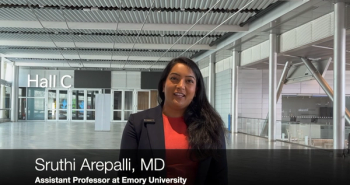
Q&A: Gregory Moloney, FRANZCO, FRCSC, discusses the “monofocal plus” toric intraocular lens
Research findings compare the rotational stability of a monofocal plus toric IOL with traditional toric lenses
The American Society of Cataract and Refractive Surgery (ASCRS) 2025 annual meeting was held in Los Angeles, California from 25-28 April 2025. At this event, our reporting team had the opportunity to speak with many of the presenter including, Gregory Moloney, FRANZCO, FRCSC. Moloney is a clinical associate professor at the University of British Columbia. The poster that Moloney presented was entitled, "Rotational Stability and Patient Reported Outcomes of a “Monofocal Plus” Toric Intraocular Lens."
The following conversation has been lightly edited for clarity.
Ophthalmology Times Europe: What did your findings reveal about the rotational stability of the monofocal plus toric IOL, especially in comparison with traditional toric lenses?
Moloney: This study is simple, the message is really, really clear and quick, and we were looking to test whether or not a design modification in the Eyhance toric lens resulted in improved or better rotational stability. The design modification that was made was frosted, haptic, rather than polished, haptic design. We looked at patients at day 1, week 1, and month 3 after implantation of a toric eye Eyhance lens. What we found was reassuring. The mean rotation in the group, which was 98 eyes and 65 patients, the mean average IOL rotation was 1.73 degrees, which is really very acceptable. In the entire cohort, 95 percent of the patients rotated less than 5 degrees. I think as surgeons, that's reassuring for us that we can trust this platform.
OTE: How did patient-reported outcomes reflect satisfaction with visual performance and refractive consistency postoperatively?
Moloney: As part of the study, we collected subjective feedback from patients with near-vision questionnaire with a pre-operative score of around 20 to 23 with a higher score being more bothersome, patients more symptomatic with near vision issues. That improved in post-op, really, to an average score of 6, which is significant improvement. So near-vision tasks were perceived to be easier after implantation of this lens.
OTE: What practical takeaways can surgeons apply when selecting or positioning this lens in patients with astigmatism?
Moloney: I think all we wanted to know personally, from our perspective, was, is, "can we trust this lens to be rotationally stable?" And I think, we feel reassured, and I think surgeons can feel reassured that a rotation rate of under 5 degrees in almost every patient, or 95 percent of patients, is a stable platform.
Newsletter
Get the essential updates shaping the future of pharma manufacturing and compliance—subscribe today to Pharmaceutical Technology and never miss a breakthrough.








































